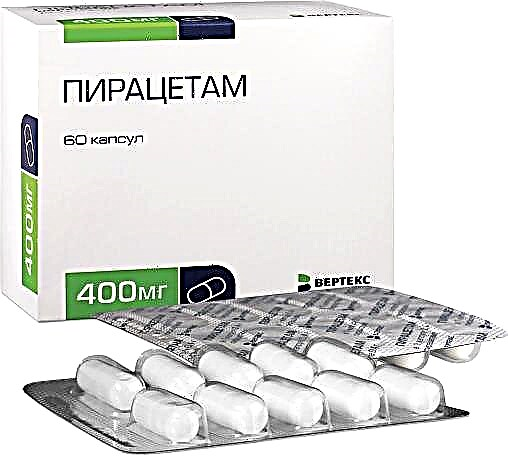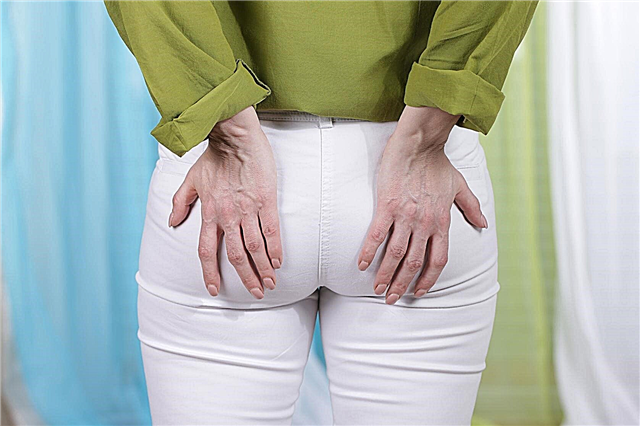Helminths are a problem that sooner or later almost all parents have to face. Children constantly drag dirty toys and hands into their mouths, as a result of which whole colonies of worms begin to actively develop in the body. This ailment should not be underestimated, because in the process of vital activity of helminths, some functions of the baby's internal systems and organs are disrupted, which invariably affects his well-being. The correct way out of the situation is to timely pass the analysis for the worm eggs.

At the first suspicion of worms, the child should be shown to a specialist
General analysis information
Before asking questions about the analysis of worm eggs on how to give a child, biomaterial for research, you should understand what it is all about.
To date, a study for the presence of helminth eggs in the body is one of the main methods for the detection and diagnosis of parasitic diseases in young children. We are talking about absolutely painless stool delivery.
The difference between analyzes for helminths and enterobiasis
Tests for enterobiasis and worm eggs are carried out for small patients mainly according to indications. For preventive purposes, examinations are carried out once a year. For the first time, children's feces for the indicated studies are taken from a child at the age of 12 months. Later, even if there is no suspicion of the development of a parasitic disease, it may be requested upon admission to kindergarten, a trip to a camp, signing up for a pool or registering for school.

There are many ways to get helminths.
The analysis for enterobiasis differs from the analysis for helminths in greater information content. With its help, not one disease is detected, but a number of types of helminthic invasions.
Feces are used as a biomaterial for research on worm eggs. An analysis of enterobiasis is often carried out without the use of feces - experts take a scraping from the anus on a glass. The studies complement each other, if in both cases the parasites were not identified, then the baby does not have them.
Indications for analysis
It is important to know how to get a child tested for worms, and it is equally important to know when to do this immediately. The main indications for the delivery of feces for helminths are the following signs of infection:
- complete or partial loss of appetite;
- bloating;
- constipation or diarrhea;
- dry skin;
- allergic skin rashes;
- headache;
- high fatigue;
- increased body temperature.
Interesting. A child who has become infected with worms may begin to grind their teeth in their sleep.
Contraindications
Since the delivery of feces for worm eggs is a simple and safe procedure that can in no way have a negative impact on the health of the baby, there are no contraindications to it.
Stool collection procedure
Many parents will be interested to know exactly how to get a child tested for worm eggs.
Training
The preparation procedure for taking biomaterial for scraping and analysis of feces is not particularly difficult. In the first case, you need to make sure that the child does not have a morning bowel movement. You don't need to wash the baby either. A container and sterile gloves should be prepared in advance. Before analyzing feces for eggs, worms, in no case should the baby be given laxatives, antibiotics or antiparasitic drugs. It is strongly recommended to follow a certain diet for several days, which involves avoiding green fruits and vegetables, legumes, eggs and meat.
The children's clinic in which the analysis will be taken can be any. Research for worms is a simple procedure that does not require deep knowledge and extensive experience from the performers.
Methods of taking scrapings
Scraping for enterobiasis is taken with a cotton-tipped stick. This is done as follows:
- The perianal folds are pushed apart;
- Scrape off the biomaterial from the area near the anus.
The procedure is painless and takes a couple of minutes. At home, if you don't have a cotton swab, you can use duct tape.
Important! At the end of the collection, the stick should be placed in a disinfected dish or sterile container.
Bowl for collecting feces
Feces are collected in special jars. They are commercially available, you can buy a special container without much difficulty at any nearest pharmacy. For the reliability of the research results, it is recommended to sterilize the bank.

Feces collection containers are inexpensive
Regular glass containers are allowed, but not recommended. Remnants of the product previously stored in it may remain on the inner walls, this may distort the analysis result.
How much feces do you need
Many parents, clarifying the information about the analysis of worm eggs on how to give it to their child, miss the point regarding the amount of material needed, and often put the entire contents of the nursery pot in the container. In fact, feces require no more than 15 grams or 0.5-2 teaspoons.

Children become infected with worms more often than adults
Storage and transportation
Stool storage is highly recommended to be avoided. Often it is not possible to calculate in time when a baby will have a bowel movement. In this case, it is permissible to keep the biomaterial in a tightly closed container in the refrigerator for no more than 8-10 hours. Feces should be transported in the same form to the laboratory.
Important! Freezing feces intended for research is not allowed under any circumstances.

Do not underestimate the danger of worms in a child.
How long to wait for the result
There are studies that need to wait a month for the results. The analysis for worm eggs is not included in their number. In the municipal district clinics, everything will be done free of charge, but the results will be available only in a day. When you contact a paid clinic, the analysis itself will cost a certain amount of money, but you can get the result in just five hours.
What the result says
The result of the analysis makes it possible to establish the fact of infection with pathogenic microorganisms. The degree of infection can also be determined from it. This type of research is included in the list of mandatory tests that are taken during a preventive examination of a child. Through the described research, the following helminths and parasites can be detected: schistosome, Siberian fluke, bovine tapeworm, pork tapeworm, pinworms, whipworms, roundworms, etc.
If the word "positive" is indicated in the deciphering of the results opposite one of the parasites, this means that it is this type of worms that has started up in the baby's body.
You should understand! When conducting research in feces, laboratory assistants have the opportunity to detect not a whole parasite, but only parts of its eggs or larvae. So in some cases, a more complex study may be required - a blood test for worms (enzyme immunoassay), the accuracy of which is much higher.
Which doctor treats
The local pediatrician will cope with the treatment of the child from helminths. It is he who will prescribe a course of special drugs that will not only relieve the crumbs of unexpected guests in the body, but also will not harm him.
Despite the fact that helminthiasis is a fairly common disease, it should not be delayed in any case. In medical practice, there are even fatal cases with neglected infections with worms of children.



